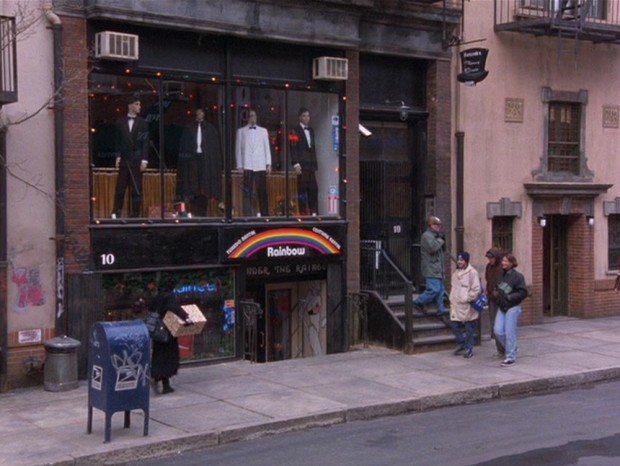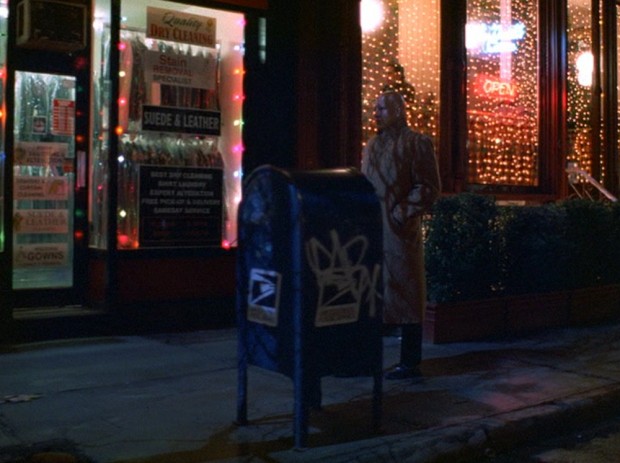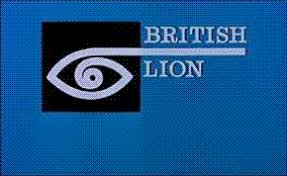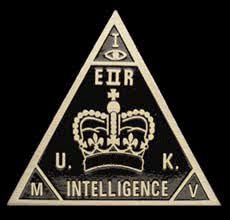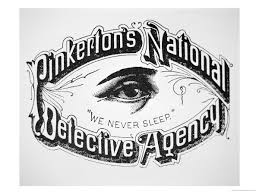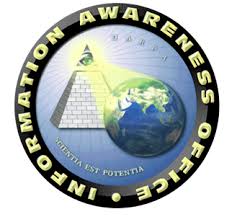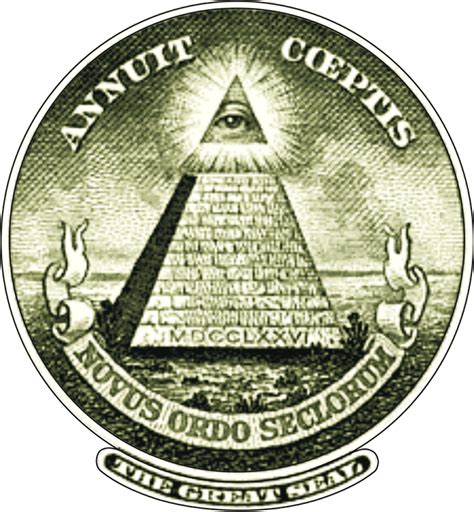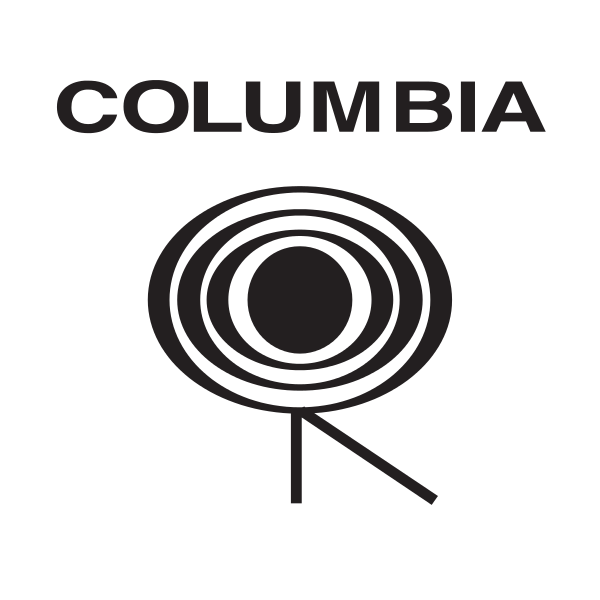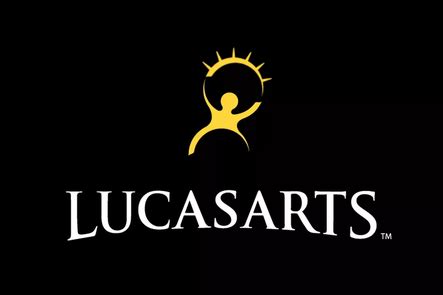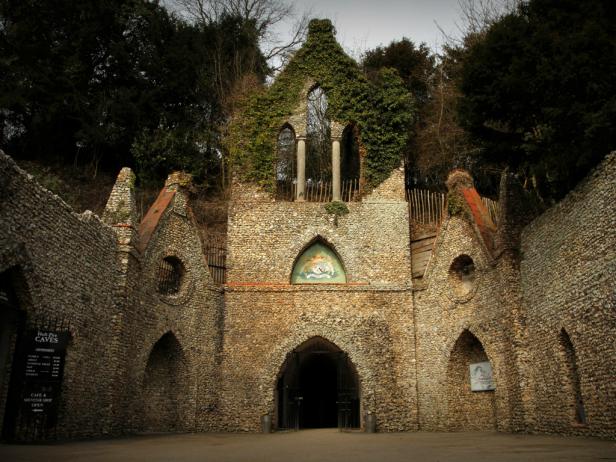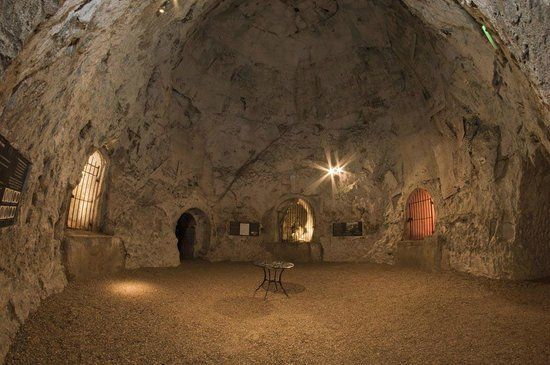The Crying of Lot 49, a Jacobin conspiracy
"‘The salvation of Europe,’ Konrad says, ‘depends on communication, right? We face this anarchy of jealous German princes, hundreds of them scheming, counterscheming, infighting, dissipating all the Empire’s strength in their useless bickering. But whoever could control the lines of communication, among all these princes, would control them.”
. . .So I propose that we merge with our old enemy Thurn and Taxis---’ Cries of no, never, throw the traitor out,. . .’Together’ Konrad is saying, ‘our two systems could be invincible. We could refuse service on any but an Imperial basis. Nobody could move troops, farm produce, anything, without us. Any prince tries to start his own courier system, we suppress it. We, who have so long been disinherited, could be the heirs of Europe!’”
Such is the sub-text of Lot49. Whoever controls communication controls the world.
So then why is the book made out to be so complex? One reason appears to be a number of perceived ambiguities within Pynchon novel’s which prove excellent for ignoring what is written in favour for whichever topic one has chosen as thesis. But this is external analysis, seeking to bend the text to its will. Unconcerned with plot, which it claims to be absent, to focus on projected themes generally confined within a postmodern framework of race, gender, and labour relations within society. Which is to suggest Lot49 is a product of its period, as opposed to say, an attempt to entice readers to think historically.
What’s lacking is internal analysis of the text, that is, what is written. An attempt at making sense of the history he selects—whether fictitious, half-truth or truth. Which is strange given Pynchon gives citations in his books to real historical figures, places, and dates as would any historian threading the past together with yarns of fiction.
With novels so thoroughly cited, it’s astounding people feel they can take such liberties. And so, I present in this essay a historical and speculative interpretation of The Crying of Lot 49, which is concerned primarily with a Jacobin conspiracy to monopolise global communication networks.
With novels so thoroughly cited it’s astounding people feel they can take such liberties. And so, I present in this essay a historical and speculative interpretation of The Crying of Lot 49, which is concerned primarily with a Jacobin conspiracy to monopolise global communication networks.
This conspiracy involves three interconnected organisations. Thurn und Taxis, The Tristero, and YoyoDyne. The first a real European postal monopoly, the second analogous to a real historical secret society, and the third synchronous to a contemporary defence contractor which manages the communication networks of the most powerful government agencies in the United States.
Thurn und Taxis
Thurn und Taxis was a real European postal monopoly. It was started in Tyrol near the end of the 15th century by a Milanese family known as della Torre in Italy, de lu Tour in France; who pioneered what developed into the modern postal system. The fictional Maijstral family which appear throughout Pynchon's books are descendants of this della Torre family.
In 1516 Emperor Maximillian I commissioned them to begin a mounted post for the Holy Roman Empire. When the Empire collapsed into a diaspora of principalities falling under the influence of the Austrian House of Hapsburg, the information monopoly of Thurn und Taxis waned and the infrastructure of their posts were usurped by a coalition of Austrian diplomats and an emerging banking firm in Frankfurt known as the House of Rothschild.
By the time of Bismark in the mid 19th century, Thurn und Taxis had been completely replaced by State Post Offices and a Rothschild controlled courier service used by European Monarchs as a diplomatic channel.
Count Egon Caesar Conte Corti touches on this history in his book The Rise of the House of Rothschild. The key figures involved were Austrian diplomat Clemens Metternich, son of one of the founding members of the Bavarian Illuminati, Franz Georg Karl Von Metternich; Johann Philipp Stadion, an Austrian finance minister and founder of the Austrian central bank, also the son of a founding member of the Bavarian Illuminati, Friedrich Lothar Joseph von Stadion; and the triumvirate of second generation Rothschild's: James of Paris, Nathan of London, and Solomon of Frankfurt.
The genesis of the Rothschild Thurn und Taxis connection dates back to just before the French Revolution. Meyer Rothschild who was patriarch of the dynasty, built the family firm in the trading nexus of Frankfurt, where Thurn und Taxis headquarters were also located. In the 1790s he conducted favourable investments on their behalf, perhaps in exchange for early access to information which could inform market trading. As Thurn und Taxis wasn't just a postal service, but was a precursor to the modern spy agency as a purveyor of monarchical diplomatic correspondences.
David Kahn's 'The Codebreakers: A history of secret writing' provides a history of the system which operated on top of the Thurn und Taxis courier and post network, called the Black Chambers of Europe. The Black Chambers were territory-orientated postal interception agencies used by European Monarchies to spy on one another, most notably during the 18th century. Each Black Chamber employed a number of polyglots which opened, copied, and then resealed foreign correspondences. The copied letters would then be passed to cryptanalysts who worked to decipher the letters into plaintext. Expertise and advanced techniques in forgery and cryptography evolved rapidly through this period. The system was an early version of the automated surveillance agency data collection systems which filter digital communications at the bulkheads of the internet backbone.
The most prestigious Black Chamber was of course, that of Austria’s Geheime Kabinets-Kanzlei. It was able to intercept, decipher, and place back into circulation between 80-100 letters a day. It was shutdown in 1848 along with most of the others, which had been displaced and reorganised along new political lines when Thurn und Taxis was absorbed into the Austrian/German Postal Association in 1850.
The Rothschild courier service was initially established between the three economic centres of London, Paris, and Frankfurt during the decade of 1810-’20. By 1820 it was relaying information all through Europe faster than any other service and so before the markets could react.
The Tristero
The characteristics of The Tristero, whether Pynchon believes the accounts or not, is congruent to that secret society described by British diplomat and spy, Alexander Horn, who charged the group as being a prime mover of the French Revolution. These claims, most well-knowingly accounted for by John Robison in his book Proofs of a Conspiracy, 1797; claim the French Revolution was orchestrated by the Bavarian Illuminati, a secret Jacobin sect operating covertly within Masonic Lodges throughout Europe to overthrow Church backed Monarchy.
Such a thing is directly referenced on page 136 of the harperperennial edition of Lot49:
“But over the next century and a half the paranoia recedes, as they come to discover the secular Tristero. Power, omniscience, implacable malice, attributes of what they’d thought to be a historical principal, a Zeitgeist, are carried over to the now human enemy. So much that, by 1795, it is even suggested that Tristero has staged the entire French Revolution, just for an excuse to issue the Proclamation of 9th Frimaire, An III, ratifying the end of the Thurn and Taxis postal monopoly in France and the Lowlands.”
In 1793 a Jacobin group called The Committee of Public Safety took over the administration of France under the leadership of man named Maximilian Robespierre. That year the Committee enacted a series of reforms, including one which established a new State Postal Service.
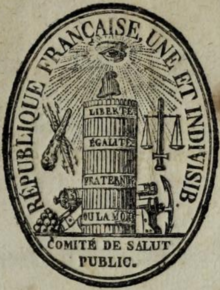
These events transpired after the Illuminati had been formally disbanded by the Elector of Bavaria in 1785. Its purported leader, Adam Weisshapt, was granted asylum in Austria by fellow Illuminati member Ernest II, Duke of Saxe-Gotha-Altenburg in Gotha.
It’s certainly possible, almost probable, that the secret society called the Bavarian Illuminati continued to operate, albeit covertly under a different name, at least within of Austria.
According to Italian historian Carlo Francovich, whose work is not translated into English, but whose research Elizabeth Eisenstein audits in her own aforementioned book; the Bavarian Illuminati persisted to exist under the guise of a number of subsequent secret societies:
The Decemberists in Russia
The Tugendbund in Germany
The Carbonari in Italy
The Philadelphs (Sublimes Maitres Parfaits) in France
A summary thesis lacking the digression warranted goes that the Bavarian Illuminati fractured into a collective of revolutionary groups active within Masonic lodges across Europe. That they were covertly and so tacitly involved to some degree revolutionary movements which burgeoned into the civil unrest and subsequent reorganisation of Church backed Monarchy into its ceremonial role of governance subordinate to that of proto-secular democracy.
Filippo Buonarotti was intimately invovled with two of these groups, the Carbonari in Italy and Sublimes Maitres Parfaits in France. The former he helped reorganise from its previous associations as part of the Risorgimento, and the latter to he actually founded in the aftermath of the French Revolution.
But this period has a convoluted history. To give just one example, The Tugendbund were operating in conspiracy against the French occupation of Prussia, and so alongside Metternich's Austria. While at the same time out of France, Buonarotti's Philadelphs worked intially to undermine the Austrian Monarchy, attributing seemingly contradictory motives to a man involved with both.
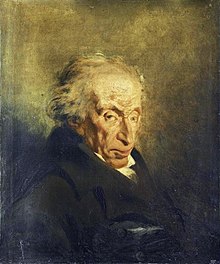
The Tungendbund were a secret society largely financed by William of Hesse, whose estate Meyer Rothschild had managed investments for. Count Egon Caesar Conte Corti's aforementioned book cites Austrian secret police investigation reports into the group, which had been operating out of the Masonic lodge of Hanover. Members of the group were questioned over its activities during the French occupation of the German principalities including: William of Hesse; William’s principal financial advisory, a man called Buderus; and Solomon Rothschild, Meyer's eldest son. French authorities had also questioned Solomon over groups financing on August 13th, 1808.
As mentioned, Clemens Metternich and Johann Stadion were both scions of Bavarian Illuminati members. Both held the highest administrative positions within the Austrian Empire throughout the Napoleonic wars. Both of them worked in close association with three of the Rothschild brothers to finance and move funds to armies across the European continent. The modern foreign exchange and central banking systems were greatly influenced by the creative methods invented for secure money transferal during this period, necessitated due to the insecurity of freighting physical monies through highly sporadic supply routes. Foreign exchange bills were used in place of chests of coin, speedily delivered by a single Rothschild courier on horseback as opposed to bulky carriages escorted by armed guards.
If a historical interpretation of The Crying of Lot 49 suggests that the Tristero are most analogous to a speculative history surrounding the perpetuation of the Bavarian Illuminati, then their muted post-horn would be analogous to the Illuminated eye, the eye of Torus, eye of providence, all seeing eye, eye of big brother, third eye, numerous media conglomerate logos, or whatever one wishes to project on such a ubiquitous and ancient symbol.
The confusion or multi-meaning of the muted post horn is a theme throughout the book. Oedipa discovers the symbol functions to denote a private communication network parallel to that of the US Post Office called W.A.S.T.E. A private communication network functioning as an ecosystem of self-interested private societies, all corresponding and organising themselves beneath the banner of Tristero. There’s the Inamurati Anonymous, a society for those against love. The Alameda County Death Cult, a sacrificial sex cult. The Tristero post horn is being used by myriad groups because it isn’t representative of any group but a network of very different groups. A network of secret societies all using the same secret communications infrastructure controlled by, supposedly, the Tristero.
Such a network appears analogous to how the organisational structure of Freemasonry had been co-opted during the 18th and 19th centuries to obfuscate the incubation and perpetuation of various secret societies. Secrecy and conspiracy were necessities for these societies cultivating the philosophical tenets of scientific rationalism, which would burgeon into the enlightenment. Their beliefs threatened the power of Monarchy government and in turn the Church's. So these societies, the most notorious being the Bavarian Illuminati, were forced to meet secretly to share ideas, and use conspiratorial means to achieve their ends.
This period is the root for a lot of the confusion found in modern conspiracy theory. As from a Biblical perspective the relegation of the Church to a strictly ceremonial role behind that of modern financial and scientific institutions can be viewed as nothing other than Satanic by monotheists who adhere to the strict binary classification system of good or evil, heaven or hell, god or satan; given little room for what they would call a purgatory of belief.
This confusion is amplified further by modern science’s roots in occultism, and worship in certain instances worship the same pagan deities that, perhaps, were the ones the Biblical Satan was modelled upon.
As for the sciences themselves: Mathematics and astronomy came from astrology; chemistry from alchemy; modern philosophy and psychology, perhaps, from parts of the esoteric beliefs of Kabbalah mysticism. It should be of no surprise that the modern conspiracy movement is extremely popular within grassroots religious groups. There's no denying that the institution of Freemasonry was ostencibly more powerful than that of the Church by the 19th century, nor is there that Freemasonry had some very strong under currents of the Occult in its belief's and ritual's.
In reality Freemasonry was rather innocuous and powerless, was only semi-secretive in it's practises, and acted mostly as a disguise for a number of more secretive societies within it, which were understandable confused for being Masonic, and in turn as Satanic to the monotheist.
Such is the confusion Oedipa navigates. She finds the muted post horn of the Tristero everywhere, but can only find the private societies using W.A.S.T.E and never Tristero. What she experiences is, however, synchronous to modern Illuminati pop-conspiracy theory; which points out that the Illuminati eye is found everywhere, but cannot point to any real proof beyond this.
Supposedly, the only distinguishable characteristic used to discern the Illuminati eye from any other is if it is an eye found on the right side of a face(appearing on the left if looking at you) in absence of its leftward counterpart. A photograph of a celebrity or a shot in a film where the left side of a face is intentionally obscured, is thought to be a tacit mark of the Illuminati.
There does appear to be a conscious and ubiquitous obfuscation of the left hand side of faces in various artistic mediums, though this isn’t evidence of anything more than a seemingly unattributable cultural phenomenon.
This phenomenon is also observed in the following examples of logos for organisations involved in information gathering or dissemination.
Oedipa’s investigation into the Tristero relies upon a single piece of hard evidence, lot item number 49. This forged stamp by the end of the book remains the only physical evidence left tying the muted post horn, historically, to the Tristero. The bookstore that sold copies of Jacobin revenge play has burnt down. The director who adapted the play “committed suicide”. But the stamp remains as lot number 49, a little piece of proof that they did or do exist. Presumably won at auction and taken out of public circulation at the end of the book, eradicating any tangible trace of the Tristero.
Pynchon has thus demonstrated, maybe unintentionally, why one finds the “Illuminati” eye everywhere but no Illuminati. They are omnipresent but not manifest. Their existence cannot be confirmed with evidence, only suspicion; and healthy suspicion in the absence of tangible evidence is eventually disregarded or, if held to long enough, becomes paranoia. But as long as the stamp exists Oedipa cannot be paranoid. Its historicity she can touch like a prayer bead for truth.
When the book ends and that stamp is taken away, so to is any meaningful investigation into the Tristero, frustratingly so for some, but to continue it any further would be to succumb to paranoia.
There can be no doubt that the Tristero conspiracy in the book was influenced heavily by the real history of the Bavarian Illuminati, which is speculative. That Oedipa’s suspicion for Tristero's existence, driven by the ubiquitous use of its symbol, is analogous to the modern 'Illuminati Confirmed' pop-culture meme based on the same ubiqitious usage of Eye iconography in media communications and information collection entities. Most interestingly though, a State Postal service actually was established during the brief period the Committee of Public Safety's oversaw the administration of France, and this organisation used the Illuminated eye in its logo. Remember it is speculated in the book that the Tristero were accused of orchestrating the French Revolution to primarily pass a Postal act into law.
A Schism in Tristero - An American Postal Conspiracy
The character Fallopian, member of the Peter Pinguid society, is writing a book on an American postal Conspiracy:
"Turned out Fallopian was doing a history of private mail delivery in the U.S., attempting to link the Civil War to the postal reform movement that had begun around 1845. [Fallopian] found it beyond simple coincidence that in of all years 1861 the federal government should have set out on a vigorous suppression of those independent mail routes still surviving the various Acts of '45, '47, '51 and '55, Acts all designed to drive any private competition into financial ruin. He saw it all as a parable of power, its feeding, growth and systematic abuse."
So here we have reference to another Post Office conspiracy, this time on American continent. When Oedipa goes to the YoYoDyne affiliated nursing home Vasperhaven to meet with a Mr Thoth, he tells her a story about his grandfather, who while riding for the Pony Express during the gold rush period in California had survived an attack by a group riders dressed as Indians.
"[Thoth] reached down to a knitting bad by his chair and came up with. . .a dull gold signet ring. 'My grandfather cut this from the finger of one of them he killed. Can you imagine a 91-year old man so brutal?' Oedipa stared. The device on the ring was once again the WASTE symbol."
Oedipa now has evidence suggesting the Tristero were active in the United States at the same time the postal reform acts were being pushed through to suppress private competition. And that this activity in question was an attack on the major remaining private postal service, the Pony Express.
How did the Tristero end up in America? An explanation for this is given near the end of the book by a translation of an article from a 1865 issue of Bibliotheque des Timbrophiles by Jean-Baptiste Moens. Moens was a Belgian philatelist (stamp historian) and Bibliotheque des Timbrophiles was a real publication, though a rudimentary search online failed to find any issue prior to 1878.
"According to recently discovered and decrypted journals of the Comte Raoul Antoine de Vouziers, Marquis de Tour et Tassis, one element among the Tristero had never accepted the passing of the Holy Roman Empire, and saw the Revolution as a temporary madness. Feeling obliged, as fellow aristocrats, to help Thurn and Taxis weather its troubles, they put out probes to see if the house was interested at all in being subsidized. This move split The Tristero wide open. At a convention held in Milan, arguments raged for a week, lifelong enmities were created, families divided, blood split. At the end of it a resolution to subsidize Thurn and Taxis failed. Many conservatives, taking this as a Millennial judgement against them, ended their association with The Tristero. Thus, the article smugly concluded, did the organisation enter the penumbra of historical eclipse. From the battle of Aysterlitz until the difficulties of 1848, the Tristero drifted on, deprived of nearly all the noble patronage that had sustained them; now reduced to handling anarchist correspondence; only peripherally engaged--in Germany with the ill-fated Frankfurt Assembly, in Buda-Pesth at the barricades, perhaps even among the watchmakers of the Jura, preparing them for the coming of M.Bakunin. By far the greatest number, however, fled to America during 1849-50, where they are no doubt at present rendering their services to those who seek to extinguish the flame of Revolution."
If a schism did occur in Tristero, and a faction migrated to the United States after the French Revolution, becoming part of an ongoing conspiracy to institute a state postal monopoly; Is there anything analogous to such a story in the real history of US Post Office?
The first Postmaster General of the US Post Office was Benjamin Franklin, a man with an interesting history and whose face graces the Federal Reserves most venerable denomination.
He had been Postmaster of Philadelphia 1737-1753. Then In the mid 1750s he travelled to Britain as part of a Pennsylvanian envoy. He would remain in continental Europe for the next twenty years, spending most of his time between London and Paris.
While in London he became a close friend of Franchise Dashwood and a prominent member of Dashwood’s Hellfire club, also called the ‘Monks of Medmenham’, which famously bore a nine chamber underground clubhouse called the Hellfire Caves within a hill beneath a church. The Hellfire Caves are one of the largest chalk excavation sites in the world, and one of the chambers was named after Franklin himself.
As for what went on in those caves, one can only speculate, as Hunter Thompson did in a 1988 article titled The Hellfire Club:
“By the second half of the century, there was a whole new focus for the gentlemen's clubs—the worship of sex and extravagant public decadence. This was the time of the infamous Hellfire Club, which included among its inner circle the Prince of Wales, the Lord Mayor of London, Benjamin Franklin, the crazed Earl of Sandwich, the monstrous Earl of Bute, then prime minister of England. These people didn't fool around. They raised the orgy to an art form unknown since Caligula or even the fiendish Mongol hordes of Genghis Khan, who begat a long line of rapists and treacherous sex maniacs who were said to lament the fact that the human body had so few orifices to penetrate that they were forced to create new ones with their own daggers in order that the whole clan could swarm on a victim at once.”
During the 1760s Franklin did take periodic trips back the United States. He returned to Philadelphia in May of 1775, just at the beginning of the American Revolution and joined the Second Continental Congress. Two months later in July the US Post Office was established and Franklin appointed as its first Postmaster General. He was tasked with over seeing the creation of federal communications network between the 13 colonies. He would remain in his position for a little over a year, become part of the Committee of Five to draft the Declaration of Independence in July, and then leave for Paris in December of 1776 in the role of US Ambassador to France. All in all, his time spent in the United States was a little over 18 months, most of which was to do with creating a new US Post Office.
Franklin spent the next nine years in France as ambassador. In 1783 he was involved in drafting the Treaty of Paris alongside du Pont family patriarch, Pierre Samuel du Pont de Nemours, who was then Inspector General of Louis XVI’s chamber of commerce. Benjamin Franklin appears to be the earliest du Pont family connection within the American establishment. A point further elucidated through du Pont family ties with Franklin’s successor, soon to be US President Thomas Jefferson, who joined Franklin in Paris in 1784 and then took over the ambassadorial position in 1785 holding it until 1789. During this four year period Jefferson worked closely with Pierre’s son, Victor Marie du Pont, a relationship which would continue onto the American continent at the turn of the century.
George Washington signed the Postal Service Act of 1793, which allocated large portions of Federal revenue, raised through new tariff acts, to the US Post Office. In its early days the US Post Office accounted for about a third of all government employees. It was responsible for stitching the 13 colonies together into a Federation manifested in a new common infrastructure.
It first chartered new interstate post roads, or highways, increasing the flow of information between states which allowed for greater social and economic integration between the populations. It then chartered the construction of railroads using a hub and spoke system branching outward from its Washington location. After that the telegraph network and a money order system on top of it.
The US Post Office was a chartering agency that allocated most of the initial funding for the capital intensive infrastructure of industrialization. The allocation of the charters themselves nurtured a number of families into perpetual conglomerated dynasties. The du Pont family sat atop this group, and I believe it no coincidence that of all States Delaware, still to this day, is the one companies trust to incorporate anonymously within. Nearly everything in Delaware seems to have the scent of a du Pont on it, even newly inaugurated President (as I’m writing this) Joe Biden. It might have something to do with the trust elucidated from the permanence and European aristocracy of that family, alot of US capital being in actual fact European capital.
When the French revolution came, Pierre Samuel du Pont de Nemours - full names being important, as these types of families generally like to discombobulate their genealogy by sharing first, last, and sometimes even middle names – appeared to have sided with a faction of the Jacobin’s more sympathetic to the aristocracy and monarchy than other factions. He was jailed and sentenced to death but escaped such fate when Robespierre was guillotined. After the Revolution had run its course, he migrated to the United States with his two sons, Eleuthere and Victor. While his sons built up the families chemical company, Pierre worked within Thomas Jefferson’s administration (1801-1908) modeling the new American education system. He was some what of an internationalist; with roots in both the American and French establishments, trusted by both parties to facilitate transactions between them such as the Louisiana Purchase for instance.
The du Pont family are relevant given-a, I’ll admit slight, synchronicity between their history and speculation on the nature of the schism within Tristero, as told:
“Reading like another of Bortz’s costume dramas, it told of a great schism in the Tristero ranks during the French Revolution. . .
. . .one element among the Tristero had never accepted the passing of the Holy Roman Empire, and saw the Revolution as a temporary madness. Feeling obliged, as fellow aristocrats, to help Thurn and Taxis weather its troubles, they put out probes to see if the house was interested at all in being subsidized. This move split The Tristero wide open. . .Thus, the article smugly concluded, did the organization enter the penumbra of historical eclipse."
The du Pont family were aristocrats initially supportive of the French Revolution and the introduction of constitutional monarchy. Pierre du Pont was at one time President of the National Constitutional Assembly and a prominent member of its constitutional monarchist wing. But when Robespierre’s radical Republican faction took over, denoting the duration of administration by the Committee of Public Safety, du Pont was imprisoned and sentenced to death, escaping such fate only when Robespierre was guillotined himself. Remember it was this Committee of Public Safety which during its brief reign had instituted France’s first State Post Office.
Pierre du Pont and his two sons migrate to America after the French revolution, arriving just in time for their old acquaintance Thomas Jefferson to become President. Pierre begins work drafting a national education scheme in Jefferson’s administration while his two son’s set about founding the families industrial empire.
In the text, this account given of the Tristero schism during and after the French Revolution is primarily sourced from the “recently discovered and decrypted journals of the Comte Raoul Antoine de Vouziers, Marquis de Tour et Tassis(French Postmaster title),"
There is no such historical person, or if there is, they’ve done an excellent job shrouding themselves beneath monikers of peerage. However, and I present this entire section as perhaps nothing more than a synchronicity, there did exist a quite famous chemist called Antoine de Lavoisier, who happened to have extremely close ties to the du Pont’s, who was decended from a family of French Postmasters.
Antoine Lavoisier was a member of the ancient regime to which Pierre du Pont was also.
He was the chemistry tutor of Pierre’s son, Éleuthère du Pont, who worked for Lavoisier at the French government Gunpowder works – Regie des Poudres—up until the time of the French Revolution. Remember it is this son who founds the du Pont chemical company.
And According to an encyclopedia entry, Lavoisier’s earliest traceable ancestor was also called Antoine de Lavoisier, who was a courier for the royal post. He died 1620. His son, also Antoine de Lavoisier, became Postmaster of the Villers-Cotterets region.
Lavoisier also shared Benjamine Franklin as a professional acquitance. The two researched an early form of hypnotism:
Among the most notable of these committees were those formed to investigate the condition of the prisons and hospitals of Paris and one, on which Lavoisier served with Benjamin Franklin, charged with investigating Mesmer’s cures by what he called “animal magnetism.”
Lavoisier would eventually end up in a guillotine, for whatever reasons unable to secure a pardon like Buonarotti or du Pont, as it dropped on his neck 8th may 1794.
It goes without saying that all of these men: Franklin, Jefferson, du Pont, and Lavoisier were all Freemasons. However, as discussed earlier, Freemasonry is nothing but a shell of many different sects and doesn’t warrant much discussion in and of itself.
Tristero Post-Schism: Anarchism throughout the European continent - Bounarotti to Bakunin
But what of a possible perpetuation of Tristero within Europe? The article overtly outlines Tristero’s involvement in the 19th century anarchist movement:
“Thus, the article smugly concluded, did the organisation enter the penumbra of historical eclipse. From the battle of Aysterlitz until the difficulties of 1848, the Tristero drifted on, deprived of nearly all the noble patronage that had sustained them; now reduced to handling anarchist correspondence; only peripherally engaged--in Germany with the ill-fated Frankfurt Assembly, in Buda-Pesth at the barricades, perhaps even among the watchmakers of the Jura, preparing them for the coming of M.Bakunin”
The Frankfurt Assembly was an attempt to culminate various prior revolutionary movements in constitution of a parliamentary federation of German principalities.
Jura in Switzerland became the geographic centre of Mikhail Bakunin’s anarchist revolution during the 1860s and 70s.
The Budapesth barricades are in reference to the Hungarian Revolution of 1848.
So it's advertly proposed that Tristero went even further underground, stripped of their aristocratic endowments, and began to furnish anarchist radicalism throughout Europe. Which brings further digression into the enigma of Filippo Bounarotti.
Bounarotti is a controversial figure for historians, but there is somewhat of a consensus around attributing the origins of both extreme wings of totalitarianism, Communism on the left; Fascism the right, to his book - ‘A conspiracy of equals’. The books thesis I will give later.
All the information I somewhat trust on Bounarroti has come from the aforementioned Elizabeth Eisenstein book, which is itself a summery of a number of different non-English language books written on him. The book was published by Harvard press in 1959 and I’m inclined to believe Pynchon would’ve read it during his research for Lot49—or, possibly Lot49 was written because he came across this esoteric historical riddle. Eisenstein was a pupil of Crane Brinton, respected Harvard historian who was considered somewhat of an authority on revolutionary France, revolutions in general, and the go to source for english language books on the topic. It’s a certainty that Pynchon would’ve read The Anatomy of Revolution by Brinton.
I’ll give an extremely brief summary from my, possibly inadequate, notes taken from Eisenstein’s own summary of Bounarotti’s life.
While in Sospello he begins laying groundwork for a yet another conspiracy, creation of a cosmopolitan secret society called Sublime Maitres Parfaits, SMP. In 1806 he is given permission by French authorities to relocate to Geneva, where he founds the society in 1809.
Bounarroti takes on a passive role in Brussels and begins to write books which would greatly influence the fathers of both anarchism and communism, M Bakunin and Karl Marx. His most influential one, being Conspiration des égaux (‘A Conspiracy of Equals’ – 1828). Karl Marx read it in 1848 and attempted to have it translated into English, published by Moses Hess before their falling out.
Bounarroti eventually died in 1836, leaving an enigmatic legacy for historians to puzzle over. But even after his death, the books he had written and the secret societies he had formed or inflitrated continued to play a major role in the publication, propagation, and incubation of myriad revolutionary groups working clandestinely across the European continent in the lead up to an orchestra of political revolutions during the middle of the 19th century.
Buonarotti seems very much an archetype of the international spy before nation state allegiances where to become so clear cut - like a diamond. Which, speaking of, begs the question, why were MI5 lending out James Bond to the de Beers diamond cartel in 'Diamonds are Forever'?
Buonarotti's life reminds me very much of the character V, or Victoria Wren, in Pynchon’s book of the same name. A mysterious double agent provocateur, showing up in cities during periods preceding great political unrest. Her motivations unascertainable due to seemingly contradictory outcomes. . .possibly though, only if one refuses to acknowledge some strategic sphere to geopolitics, spanning over a lesser tactical one bamboolzed by sporadic term limits.
For a more in depth write up on the life of Buonarotti, read this article by Terry Melanson: Militant Masonry: Amis de la Vérité, Buonarroti Masters and French Carbonari – Conspiracy Archive
Conspiracy of Equals
Bounarroti as a political philosopher was principally concerned with implimenting a grand strategy of agitation and propaganda as means of achieving societal universality. What he was espousing was essentially what we know as totalitarianism, which manifested during the early 20th century in two extremes: Communism on the left, Fascism on the right.He called it the State of the Supreme Being. The creation of a totalitarian state through an all embodiment of the individual within the state in order to surpass the inadequacies inherent within an individuals soul. The characteristics of this state he outlined in his book, ‘Conspiracy of Equals’, published in 1828:
- Spirituality was to be fulfilled through an official state religion modelled on Rousseau’s ‘Cult of the Supreme Being’. Which was to supplement religious mythology with scientific reason as a societal moral compass. This was in fact briefly implemented by the Committee on Public Safety during the French Revolution.
- All writings to be restricted to those aligned to the interest of the state.
- Arts and sciences to be discouraged amongst the general population
- Fashion to be eliminated and replaced with a universal dress code of social status.
- Management of the economy through State coordination between merchant monopolies operating each industry.
The first manifestation of a truly active communist party is contained within the bourgeois revolution, at the moment when the constitutional monarchy is eliminated. The most consistent republicans, in England the Levellers,[138] in France Babeuf, Buonarroti, etc., were the first to proclaim these “social questions”. The Babeuf Conspiracy, by Babeuf’s friend and party-comrade Buonarroti, shows how these republicans derived from the “movement” of history the realisation that the disposal of the social question of rule by princes and republic did not mean that even a single “social question” has been solved in the interests of the proletariat.
In his writings Buonarotti described the underpinning purpose of Jacobinism to mean ‘modification of the human heart’. He believed the human heart should function as an organ of the body politic as opposed to an individuals own function. That virtue should be externalised away from the individual soul, to only be found within the soul of the republic. That all value, purpose, or meaning to be found, can only be found externally.
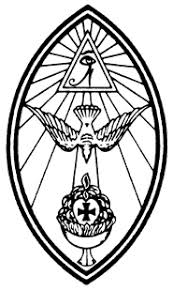
There is a stringboard of association between Buonarotti and OTO but I haven’t looked deeply into it. However, it goes as such:
Buonarotti created Sublimes Maitres Parfaits, which became Monde, which infiltrated the Carbonari, just before they were to become prime movers behind the Risorgimento(the Italian unification movement) and whose leadership consisted of Giuseppe Mazzini and Giuseppe Garibaldi, the later of which became the first Grand Hierophant (leader) of the Rite of Memphis-Misraim, who Theodor Reuss was a member of and eventually Grand Hierophant, before he went on to create O.T.O in the image of the Illuminati.
Lots of string, little context
The characteristics of the totalitarian utopia outlined in 1828 by Buonarotti in his book, 'Conspiracy of Equals', to some extent spawned scions of Communism and Fascism a century later. Oddly, and opposed to this totalitarian influence, Bakunin also credited Buonarotti as an influence on the strategy used by his secret anarchist societies. It would appear Communists, fascists, and Anarchist's alike learnt a great deal from the teachings of Buonarotti, whose name I doubt you'd heard before.
Bringing this congruent with the Tristero in Lot49. Bounarotti’s activities after the French Revolution remain analogous to those of a faction of the Tristero invovled in the anarchist movement 'in the lead up to Bakunin'. Thus it would appear that at least the non-aristocratic faction of the Tristero are indeed modelled on the conspiratorial Jacobins after the French revolution, whose only surviving figurehead was Buonarotti, who himself possibly was apart of the perpetuation of a faction within the Illuminati after it was disbanded.
Bundling together a historical conspiracy
To project what I believe to be ‘some’ historical allegories given by Pynchon into a conspiratorial thesis, is to give a rather strange alternative history of the world since 1794, of which I’m unsure how much is truth. I only see smoke so must believe there’s fire. Leading up to the enlightenment there was Monarchy. Monarchical authority was a divine right given through ordination by the Church. There were bloodline customs to Monarchy, but the transfer of power from Monarch to Monarch was always ordained by the Church. Thus, the Church was an institution which oversaw and controlled the transfer of power, a process conceptualised as the transference of a divine Spirit between human vessels. This made the Church function as a power structure behind Monarchy and its leadership a cabal. If the Church were to refuse ordination of an heir to the thrown, the heir would have no divine authority in the eyes of the people and would be deemed illegitimate. This was the divine constituion of authority.
With the advent of scientific rationalism and enlightenment, the Church and Monarchy saw their authority threatened by those of secular disposition, who were questioning the place of divine authority as government. These secular thinkers evolved from occult traditions, whose beliefs and practises evolved into scientific fields we use today: Alchemy to Chemistry and Astrology to Astronomy being two key examples.
These new secular thinkers were the enlightenment. They found themselves persecuted by the Church and Monarchy, so naturally met and discussed things clandestinely. The infrastructure to obfuscate their activities already existed, or maybe they created it, as the Freemasonry network with established lodges within every consequential city of Europe.
Within Freemasonry developed a series of secret societies which operated in a loosely bound network to undermine the power of Church backed Monarchy. These societies had strong spiritual beliefs based on occult and pagan traditions which predated monotheism.
The only way to displace the role of the Church and its control over the Monarchy, which in turn had a monopoly over violence through its control of the military and police, was to raise an informal army from the general populace.
This required fermenting collective fervour within the general population which, with the right spark, would ignite into civil unrest, insurrection, and revolution.
To ferment civil unrest into an informal movement required two main things, propaganda and subversion.
Propaganda requires the exercise of mass communication to a population with baseline literacy though not necessarily comprehension. Control over or access to the various mediums of communication is required for propagation. This is commonly understood and why during historical military coups radio stations have been just as important targets to take, if not more so, than government buildings.
Subversion was required to agitate and manipulate an established authority into actions it would otherwise wish to avoid. Eliciting such damage to an institutions image is required so that propaganda has a potency of truth to extrapolate off.
So subversion is ancillary to propaganda in the sense wood is to fires potency. In turn propaganda is only as good as its ability to propagate. Which of course means communication is the key to overthrowing an established authority, or maintaining it.
This is the historical conspiracy Lot49 is concerned with. A conspiracy for control over communication and the role it may have played during the Age of Revolution. But the book takes place in the present (1960s) only lapsing back into the past. With the Tristero conspiracy starting in the lead up to the French Revolution, schisms into the 19th century, the trail ending in 1860.
The Tristero trail is picked back up again by Oedipa in 1960 through the Inverity estate holdings, leaving almost a perfect century of unaccounted for developments. This begs the question, what relevance does a 20th century Scottish businessman have to an early 19th century secret revolutionary society?
This blank century spans the rise of financial capitalism dominated by a fraternity of merchant banking families and the growing power of Central Banks over state affairs.
I’ve already mentioned that the Rothschild courier service was established around the same period that T&T was being replaced by State Post Offices in nations transitioning to ‘democracy’ government. While these new State Posts carried the bulk of a nations communications, the Rothschild service was used as an exclusive “diplomatic channel” for those conducting State affairs.
My speculation here is that the book, or Pynchon, doesn’t need to cover this period, because if international communication networks had come under the central authority of a cabal, then all else would successively fall into the control of that same cabal over this period spanning financial capitalism, one defined by rapid monopolisation of all industrial sectors by a collection of families which would become the old money oligarchs of the 20th, and dare i argue 21st century.
What had been a conspiracy to control communication would lead into a conspiracy to control banks, into a conspiracy to control corporations, into a conspiracy to control governments, into a conspiracy to control industries, into a conspiracy to control communities, so on and so forth.
“Communication is the Key” cried Nefastis.
Through this blank century communications underwent a series of advents. Courier post was superseded by the telegraph. The telegraph by the telephone. And eventually radio appeared. Then during the 1950-60 period Lot49 is set, comes the advent of the internet. Which brings us to YoyoDyne and its possible ties to the Tristero through the Pierce Inverarity estate.
“Look what’s happening to them. In school they got brainwashed, like all of us, into believing the myth of the American inventor—Morse and his telegraph, Bell and his telephone, Eddison and his light bulb. . .Then when they grew up they found they had to sign over all their rights to a monster like Yoyodyne.”
The internet created in the 1950s as part of S.A.G.E, Strategic Air Ground Environment. It was a missile detection system used by NORAD in the early years of the cold war. It used modems to transmit and translate binary code across the AT&T copper wire network (AT&T was a J.P Morgan company for future reference) and allowed Air Force base computers to communicate and coordinate across America in real time(some latency). S.A.G.E was then abstracted into ARPANET with a new transmission protocol called packet switching, which is often mistaken as the first implementation of the internet. For an in depth look into military origins of the internet, read Surveillance Valley by Yasha Levine.
It’s important to note the two power structures at play here. AT&T providing infrastructure and the newly minted US Air Force, the most dominant branch of the US military after WW2, providing the technology on top of it.
A convergence occured here between the international banking fraternity and their control over the communication infrastructure, copper wire in this case, and Aerospace defence contractors with new technologies changing the method of communication along it, with the modem.
The Internet in theory was conceptualised as early as 1948 within Norbert Weiner’s Cybernetics: Control and Communication in the Animal and Machine. A rough explanation of it is that biological systems and computer systems work in the same way, a network of devices which make decisions based upon decisions made in the past. That the biological world we lived in was a complex interlinked system of information operating on cause, effect and feedback.
Duality of binary code
Lot49 was written after the advent of the internet. During the late 1950s Pynchon had worked as a technical writer for the aerospace company, Boeing. It’s fair to assume we was plugged into and curious enough about that industry to be aware of SAGE, and the revolutionary potential the modems ability to interlink computers in real time would have on global communications. It is in fact, a character in Lot49 called John Nefastis, who Oedipa meets through a disgruntled engineer working at Yoyodyne. Through this character Pynchon seems to be introducing a concept of ordering entropy through binary classification.
He began then, bewilderingly, to talk about something called entropy. The word bothered him as much as “Trystero” bothered Oedipa. But it was too technical for her. She did gather that there were two distinct kinds of this entropy. One having to do with head-engines, the other to do with communication. . .The two fields were entirely unconnected, except at one point, Maxwell’s Demon. As the Demon sat and sorted his molecules into hot and cold, the system was said to lose entropy. But somehow the loss was offset by the information the Demon gained about what molecules were where.?
So an entropy of molecules are ordered into a binary classification of hot or cold by a Demon. But somehow the information the Demon derives from grouping these molecules undoes this progress?
Communication is the key,” cried Nefastis. “The Demon passes his data on to the sensitive, and the sensitive must reply in kind. There are untold billions of molecules in that box. The Demon collects data on each and every one. At some deep psychic level he must get through. The sensitive must receive that staggering set of energies, and feed back something like the same quantity of information. To keep it all cycling. On the secular level all we can see is one piston, hopefully moving. One little movement, against all that massive complex of information, destroyed over and over with each power stroke.
This is an infinite feedback loop of information which imbalances the binary order from which it derived. Maxwell’s Demon classify molecules into the hot or cold binary system in regards to thermodynamic entropy.
Computers classify data into 1’s or 0’s in regards to information entropy. And inside every computer, operating in the background, is program called a daemon sorting data. This ‘daemon’ was named after Maxwell’s Demon by the programmers who created it while working for Project MAC, a DARPA initiative lead by Joseph Licklider beginning in 1963. Licklider had worked with none other than Cybernetics theorist Norbert Weiner at MIT before being tasked with overseeing the development of ARPANET.
The Demon passes his data on to the sensitive, and the sensitive must reply in kind. There are untold billions of molecules in that box. The Demon collects data on each and every one. At some deep psychic level he must get through. The sensitive must receive that staggering set of energies, and feed back something like the same quantity of information.
The internet is a network of computers communicating with each other. Each computer has a daemon inside sorting data. The information derived from the sorted data is passed onto the User, who returns feedback in the form of more data. From this process burgeoned the chaotic free flowing nature of digital information networks, which in turn threatened to undermine the established control over the flow of information enjoyed by the legacy systems such as post, telephone, radio, and television.
The effects of the internet have been profound. They manifest in all types of volatility found in contemporary times, most evidently a convergence of social media and politics. These potential effects were known long ago, and account for part of the reason why new technologies are often restricted for military use for a number of decades, as to allow experts the time to theorise on potential instabilities once they are finally handed over to the private sector for commodification into the civilian population. Pynchon obviously understood this potential as early as ‘65.
Even by the late 90s few could wrap their heads around the coming era of information destabilization. David Bowie saw it quite clearly in 1999, and even goes as far to to explain how information technology broke down the “duality in the way we live”. He talks about the growing duplicity of views forming between a carefully constructed duality, or 1 and 0. A theme explored quite heavily in Gravity’s Rainbow, with Pynchon describing the character Pointsman only ever living in one of two states; opposed to his colleague Roger Mexico, who “is living between the 1 and the 0”. However both are still living in one of two ways. Either alternating between 1 and 0 or occupying the space between.
Duality as a concept is as old as Philosophy itself, perhaps even predating the Greeks which means they’d been subject to it. It can be conceptualised in many different ways. Ying and Yang. Thesis and Antithesis. As above, so below ;)
It can mean that from two things come one and from that one come another two. Think, a double helix pattern in evolution. The process through which this occurs, using Hegel as guide, can be called synthesis. A struggle between two opposing forces creating a third out of both. This third force then becomes the established order for a short period, before it is then split into a new dichotomy repeating the process.
For those who understand this process, an opportunity of control over it presents with the possibility of determining what the two opposing forces are to be. By carefully selecting two extremities, for example left and right wing political beliefs, one could either narrow or widen the number of possibilities a future struggle between the two would evolve into, for example a political centre.
The symbol of this process is V.
V does not stand for Vendetta, Victory, Peace or anything else because it is not a letter.
V is a hieroglyphic of the perfect recipe.
It is two points, perfectly selected, which synthesise downward to meet perfectly between and become one. A process the mysterious Lady V stokes in Pynchon's first novel V., as civil unrest seems to follow this woman of sporatic motive all across the European continent in the lead up to WW1.
V is something Fillipo Buonarotti perhaps pursued through his influence on both Communist and Fascist ideologies. Ideologies so far left and right that they bend round full circle to meet at a point called Totalitarianism. At which point no dichotomy is further formed as now there is O.
Fallopian in the book explains this:
“But that sounds,” objected Metzger, “like he was against industrial capitalism. Wouldn’t that disqualify him as any kind of anti-communist figure?"
“You think like a Bircher,” Fallopian said. “Good guys and bad guys. You never get to any of the underlying truth. Sure he was against industrial capitalism. So are we. Didn’t it lead, inevitably, to Marxism? Underneath, both are part of the same creeping horror”
However, the ability to manifest a perfect recipe of both thesis and antithesis for synthesis rests largely, in the case of ideology, on the ability to indoctrinate enough people into the right balance between the two, but no other. When this process repeats, with each successive dichotomy derived of a prior synthesis, the possibilities for abstraction between the two narrow almost to a singular point. The point of intention.
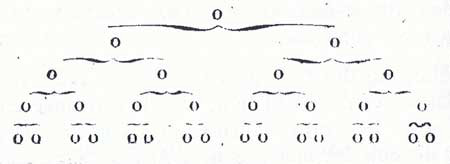
This is where things get interesting. In order to be able to create a V, one would need significant control over communication. With enough control over the mechanisms of mass communication, two carefully constructed opposing views can be simultaneous propagated into public discourse. Vitriol between the two can be incessantly disseminated as an occupying psychological force of peoples lives until they are forced to pick a side. It’s been shown many will vehemently.
However, the internet as a new communications technology threatens this process. Undermines it in its ability to break people out of the V process by exposing them to views outside of any two and the defined margin of moderation between them. And it has. There currently growing massive diverge in realities between people stuck between 1 and 0 and people who have moved outside it. Much effort is being made to retain true realty between 1 and 0, ostracise any view outside the defined margin between two views as conspiracy theory(a two noun phrase inexplicably modified to adopt the adjective, false), misinformation, fake news, baseless claims, etc.
Oedipa even becomes trapped within the V shaped narrrowing of thought:
She had heard all about excluded middles; they were bad shit, to be avoided. . .and how had it happened here, with the chances once so good for diversity? For it was now like walking among matrices of a great digital computer, the zeroes and ones twinned above, hanging like balanced mobiles right and left, ahead, thick, maybe endless. Behind the hieroglyphic streets there would either be a transcendent meaning, or only earth.In the songs Miles, Dean, Serge amd Leonard sang was either some fraction of the truth’s numerous beauty(as now Mucho believed) or only a power spectrum.Tremaine the Swastika Salesman's reprieve from holocaust was either an injustice, or the absence of wind; bones of the GI’s at the bottom of Lake Inverarity were there either for a reason that mattered to the world, or for skin divers and cigarette smokers. Ones and zeroes. So did the couples arrange themselves
The Inverarity Estate
The name Inverarity is likely a play on the word Inverity.inverity
in British English
(ɪnˈvɛrɪtɪ)
NOUN
the state or quality of being untrue
So the Inverarity Estate could be taken to mean False Estate.
This perhaps, false ownership of assets, is the best evidence for the continued existence of the Tristero in the book. It’s while navigating the vast holdings Oedipa repeatedly finds the smoke of Tristero. This can easily be explained, not through her reasoning that Pierce could be playing a sick joke on her, but through assuming his estate was in actual fact not his, but a collection of Tristero assets in his name.
Perhaps Pierce Inverarity the man was merely a holding construct. The distinction between paper and flesh is not recognized in law when it comes to assets. The real distinction is that one is mortal the other immortal. J.P Morgan was a holding agent. He was a man who supposedly owned historical amounts of wealth while alive, yet bequeathed only a small portion of those holdings to his family upon death. No adequate scholarship has accounted for this discrepancy, nor yet has it Jeffrey Epstein’s vanished estate, a glaringly recent example of such phenomenon.
It seemed like Morgan Jr in his early years was being groomed for his fathers job by Anthony Drexel, who probably determined the heir unsound, or not to be trusted with so vast an amount of asset responciblity. So during the early 20th century, much of what had once been J.P Morgan holdings were transferred else where before his death, ending the financial duopoly of Morgan-Rockefeller leaving only Rockefeller.
Perhaps, this was in some way a concession of partial control over American affairs by the European establishment, as Rockefeller had been self-made while Morgan groomed and seeded by its capital. It could be said that JP Morgan worked for the European banking establishment, while Rockefeller had been incorporated into it.
The point to be made here is that there is a long history of wealthy people whose lifestyle is supported through the discrete management of other peoples wealth. Human holding agents were one of the ways of obfuscating asset wealth before the City of London forged a global network of banking secrecy juristictions from their former island colonies.
At the beginning of the book, during Pierce’s final call and conversation as remembered by Oedipa, he speaks with her in the voice of Lamont Cranston, a character from the comic book series The Shadow.
“I think it’s time Wendell Maas had a little visit from The Shadow,” Silence, positive and thorough, fell. So it was the last of his voices she ever heard. Lamont Cranston.
“The Shadow's best known alter ego is Lamont Cranston, a "wealthy young man-about-town." In the pulps, Cranston is a separate character, a rich playboy who travels the world while The Shadow uses his identity and resources in New York (The Shadow Laughs, 1931). The Shadow's disguise as Cranston works well because the two men resemble each other (Dictator of Crime, 1941). In their first meeting, The Shadow threatens Cranston, saying that unless the playboy agrees to allow the aviator to use his identity when he is abroad, then Allard will simply take over the man's identity entirely, having already made arrangements to begin the process, including switching signatures on various documents. Although alarmed at first, the real Lamont Cranston agrees, deciding that sharing his resources and identity is better than losing both entirely. The two men sometimes meet afterward in order to impersonate each other (Crime over Miami, 1940). As Cranston, The Shadow often attends the Cobalt Club, an exclusive restaurant and lounge catering to the wealthy, and associates with New York City Police Commissioner Ralph Weston.”
Pierce is playing the role of Lamont Cranston to the Tristero’s Shadow. An insight reaffirmed through Oedipa’s constant discovery of connections to the Tristero through every asset she audits held by the Inve(ra)rity Estate.
“A new book bidder has appeared on the scene. . .There would be , as was customary, no public disclosure of persons for whom “the book” would be bidding. Then how do you know he’s a stranger? Word gets around. He’s being super-secretive—working through an agent, C. Morris Schrift, a very reputable, good man”
There is certainly an interplay with Jungian psychology here, and the clear reference of Oedipa’s husband, as Pierce puts it, receiving a visit from The Shadow, foreshadows Mucho’s eventual encounter with Dr Hilarious, a Nazi shrink ratlined into LA as part of Operation Paperclip, and seemingly operating some kind an MK-Ultra style LSD experimentation on the suburban population. This is explored thoroughly by others.
If the major interest behind the Inverarity Estate are in fact the Tristero, then the assets held should serve some purpose in the known goal of the group, which is control or would be at this late juncture, maintaining control of communication networks.
As mentioned earlier, the internet was first created on top of the J.P Morgan AT&T (decades after the family empire had dwindled) network by a scientific division of NORAD, the US Air Force. Thus this evolution of communication technology was a convergence of:
- communications infrastructure seeded by what was initially capital sent to the United States from the City of London
- scientific expertise housed within the missile defence division of the most powerful branch of the most powerful military in the world, the US Air Force. An emerging power structure Pynchon somewhat personifies in the fictional Aerospace company YoyoDyne.
YoyoDyne and American Aerospace
First we must ask what the purpose of aerospace was back when the space race began so we can determine what the US Air Force, NASA, and aerospace contractors were pioneering. As far as I can see it, two primary technologies. Missiles for offence and satellites for defence. The latter being, as it currently stands, the only commercialised technology being used in orbit.The Yoyodyne first appears in Pynchon’s prior novel V. where it’s founded by former US Air Force major Clayton Chiclitz. In Pynchon’s novel following Lot49, Gravity’s Rainbow, Major Chiclitz is involved with a division of the airforce headed by Major Marvy, who at one point are involved in dismantling of German V2 manufacturing machinery, for the assumed export to the US. After Chiclitz returns the the US he starts a toy company which quickly pivots into a US aerospace contractor with characteristically German workplace and culture.
Part of Pierces estate is Yoyodyne, a company he describes himself to be a “founding father” of.
“Pierce, She happened to know, had owned a large block of shares, had been somehow involved in negotiating an understanding with the county tax assessor to lure Yoyodyne here in the first place. It was part, he explained, of being a founding father.”
The Yoyodyne workforce is clearly German, having likely been relocated ala Dr Hilarious in Operation Paperclip. The food served at the cafeteria is German; their bar, The Scope, plays radio cologne and holds electronic music gigs. Vesperhaven house, a nursing home constructed by Pierce the same time as YoyoDyne relocated to California, houses the old German Mr. Thoth. And the prior history of Chiclitz role in Gravity’s Rainbow, affirms him as a trusted CEO of such an operation due to his involvement in dismantling the V2 equipment.
Yoyodyne is probably analogous of Rocketdyne. An aerospace company that actually studied the V-2 parts which were shipped back to the US. It’s likely German engineers were shipped to Rocketdyne along with the parts. They improved upon the V-2’s design and developed rocket engines used by NASA in the Space Program.
There were a bunch of Dyn aerospace contractors back then. TeleDyne, which developed microelectronics and control systems. Dynalectron, which was what the infamous Dyncorp went by back in 1961. And I’m sure many others that eventually merged into General Dynamics, a company Lynn Forester served on the board of during the 90s.
These aerospace contractors developed, launched and maintained the satellites which served as the new communications infrastructure for globalised wireless transmission. The employees at Yoyodyn lament in a song about a current lacking of such contracts “Convair boosts the satellite, Into orbit round”
Over time these aerospace companies merged into a handful of firms inheriting each and every contract of each other firm it had swallowed. Granting them an entitlement to the largest shares of that slush fund commonly called the defence budget. In fact of all the Dyn(e)’s the only one that remains today is Dyncorp, who funnily enough since 2001 have been steadily obtaining major contracts servicing Government agency communications infrastructure.
Dyncorp had been founded ’46 in California by Jorge Carniceros, under the name California Eastern Airways as freight hauler. Purchased Land-Air Inc in ’50 and changed its name to California Eastern Aviation. Then in ’51 merged with Air Carrier Service Corporation, got government contracts hauling cargo through Korean war. Through the 50s it provided aircraft modifications and maintenance for government agencies and sold air plane parts to foreign airlines and government. In ’57 it stopped freighting services completely and began to diversify into aerospace engineering, consumer electronics and data management systems. Then into energy in ’64 when it acquired Hydrocarbon Research Inc.
Over the next thirty years it would go on to dip a finger in everything, from vaccines to human and drug trafficking. Then in the early 90s Dyncorp began acquiring IT companies. Through these acquisitions it also acquired the contracts for IT services provided to government agencies. The following are excerpts taken from a 2003 Wired article:
“That security work earns DynCorp about half its bread and butter. The other half comes from serving as the information technology department of just about every three-letter national security, law enforcement, and defense-related agency of government, as well as the more peaceable kingdoms of the Departments of State and Justice, the Federal Aviation Administration, the Securities and Exchange Commission, and the Centers for Disease Control. Among its lucrative contracts, DynCorp is networking all the American embassies abroad, taking the government's emergency phone system wireless, and building a 29,000-terminal computer network for the FBI called Trilogy.”
“DynCorp has grown into a constellation of nine divisions - medical, aerospace, marine, and more - whose 23,000 employees do everything from managing the Postal Service's mail-handling infrastructure to launching suborbital rockets.”
It should be noted, as an aside, that during this entire period Dyncorp has kept the same maintenance contracts for planes operated by government agencies it obtained in the 1940s. I mention this only because it may explain the abnormal number of US politicians who have died in plane crashes since then. If you would like to puzzle over such an anomaly, plug politicalgraveyard.com into the wayback machine.
By the turn of the century Dyncorp had obtained government contracts to monitor the agencies monitoring everyone else: NSA, CIA, FBI, the Washington D.C Capital phone systems.
Who watches the watchers? Dyncorp most likely.
So assuming Dyncorp never lost any of its contracts, the company sounds pretty much like Tristero's wet dream, perhaps what they were counting on with an early investment in the American aerospace sector, and why Pierce would be holding such an investment on their behalf.
The European Invasion of the United States
There is a general theme of European invasion within in Lot49.The Paranoids are a reference to the British cultural invasion by bands like the Beatles, Rolling Stones, Led Zeppelin, David Bowie, etc. who all helped to shape American counterculture in worship of hermaphrodite idols and other occultism’s unbeknown to those practising them or misinterpreted by those of monotheistic disposition suddenly seeing Demons all round them.
American counter culture was an export from Britain, just as their political system was an export from France. Why? Who knows. Perhaps some felt this new superpower Europe created to outsource costs of maintaining colonies for their multinationals, had in fact drunk the cool aid of the red scare, and did in fact believe the world beyond the Eastern sphere was at threat to communism, and not just rich with plentiful resources for companies like British Petrolatum to tap. And an attempt was made to try and pacify the American psyche with rock n roll.
Which the American psyche eventually returned in kind by developing it into Metal and exporting Metallica to Russia after the fall of Iron Curtain.
Aside from the British invasion, Operation Paperclip allowed the Germans to get in on the action through an integration into the rising Military Industrial Complex of aerospace. Then there were also Germans such as Dr Hilarious operating at a deeper level of the American psyche through MKUltra psyops within the climate this British cultural invasion set. Then there is the Swastika army supply shop running out of orders too.
These were relatively recent invasions in the form of culture and engineering. The financial invasion occurred long before then and was vital for all these former ones to occur. And that financial invasion could only occur due to the communications invasion, back in 1776 through the establishment of the US Post Office. Which could be why the face of a postmaster not a President is printed upon the 100 bill issued by that other US institution created by men with European allegiances in 1913.
Pierce Inverarity is yet another example of this not so easy to identify invasion of the United States; the face of capital hiding behind the scenes, obscuring assets like Yoyodyne, should such a company ever become pertinent to future developments.
The Auction House
“The auction was duly held, on a sunday afternoon, in perhaps the oldest building in San Narciso.”
How many high class appraisers and auction houses are there in the world? Sotheby's, Christies and probably a few others. This relatively small industry control variable units of money and are mechanisms for hiding off the books wealth.
An art appraisal can be used to write off tax. If you pay an artist $50,000 for an original painting, get it appraised at $1,000,000, then donate that painting to your charity, you've just wiped away $950,000 in tax.
Art authentication can wipe away wealth. If you pay $50,000,000 for a painting, it will be authenticated before the sale. But when you go to sell it, it will be authenticated again. If the authenticator declares it a fake, you've just lost $50,000,000. Maybe you can sue? This has happened to a number of Russian oligarchs who probably didn’t realise their art collections were only worth money so long as the Western European gallery network, dominated by Western oligarchs, said it did.
Collectable works deemed "priceless" can be used to store an infinite amount of money off the books - going into the billions. As long as you control or have a trusted stake in the network which constitutes this informal monetary unit, you can know that liquidation is guaranteed.
And liquidation is guaranteed because new money is always trying to buy into this oligarch only banking system controlled and owned by old money.
When Bill Gates retired from Microsoft he was new money. He took that liquidity and bought into the oligarch network which allowed him to shelter that wealth in a network of foundations, tax heavens, art collections.
Jeff Bezos just stepped down from Amazon. Same thing will happen to him. He’ll start a number of foundations and an ever growing art collection.
The venerable auction houses of the world are almost like gateways new money must transcend through into old. If they don’t use this system or are not invited into it, inflation and taxes slowly eat away at their estate.
When the book ends within an auction house, it ends within the church of old money. This is where the trial always ends, in the book, and in real life too. For one can no longer follow the money, or much of anything, into the informational blackhole of anonymous bids over assets of dubiously abstract value, proxy agents conducting all affairs, and banking secrecy jurisdictions spidering out from the City of London into the former colonies of the commonwealth.
Within the auction house we confront perhaps, this hidden prime mover, maybe the Tristero; or perhaps Pynchon doesn’t confront it, ends the book. Walks away.
Revealing the Tristero - A conclusion and introduction to real paranoia
“She was not sure what she’d do when the bidder revealed himself. . .[she was] wondering if she’d go through with it”
What had happened to poor Driblette, after he decided to reveal the Tristero as characters on stage?
“Did she know why Driblette had put in those two extra lines that night? Had he even known why? No one could begin to trace it. “
Let us visit this part of the novel for the first time.
“Oedipa realized then, cold corpse-fingers of grue on her skin, that it was exactly the same look he’d coached his cast to give each other whenever the subject of the Tristero assassins came up. . .she decided to ask about this look.
Was it written in stage direction. . .Or was that one of your touches?
‘That was my own,’ Driblette told her, ‘that, and actually bringing the three assassins onstage in the fourth act, Wharfinger didn’t show them at all, you know. . .If I were to dissolve in here. . .be washed down the drain into the Pacific, what you saw tonight would vanish too. . .that part of you so concerned”
“why the assassins came on, why the black costumes. You could waste your life that way and never touch the truth. Wharfinger supplied words and a yarn. I gave them life. That’s it.”
Perhaps the Tristero would allow only allow themselves to be reffered to in the abstract or in allusion, never directly identified or manifested. If so, it would be a cardinal rule broken by Driblette, who didn’t believe them to exist, just before he walked into the ocean.
Perhaps Carroll Quigley made the same mistake in his book Tragedy and Hope. Made the same mistake during his final lecture given in ’76, and his fears given during a Washington Post taped interview (never published) two years prior, perhaps came true when he passed from a heart attack in ’77.
Or perhaps when the leader of the John Birch Society Congressman Larry McDonald misrepresented Quigley’s book on national television, none the less broke that same cardinal rule. Perhaps his plane being shot down four months later was no coincidence. Perhaps. . .
“But that sounds,” objected Metzger, “like he was against industrial capitalism. Wouldn’t that disqualify him as any kind of anti-communist figure?”
“You think like a Bircher,” Fallopian said. “Good guys and bad guys. You never get to any of the underlying truth. Sure he was against industrial capitalism. So are we. Didn’t it lead, inevitably, to Marxism? Underneath, both are part of the same creeping horror”
Is it not strange there exists this phenomenon where it is understood corporations have come to dominate societies, but that in fact no one owns them—or even worse, that everyone does. That societies dominate themselves in some strange act of classless self-flagellation.
And so corporations have become abstract humans willing and able to carry the burden of societal scorn. Like Christ bearing the cross of his owner. Attributing it to none other than a brand or a sector like big tech or the banks. This is fine because no one breaks the rule. No one identifies a human face. Only paper effigies of power.
There is nothing controversial with pointing out corporate greed, corporate lobbying of governments, that corporations cause general pain and suffering. This is within the rules. And it is encouraged because there is no choice but to consume from them.
What is controversial however, is to suggest that these corporations are in fact owned or controlled by a group of people, an interest group, small enough as to be identified and attributed blame.
Accountability must remain with unaccountable CEOs, only ever occasionally leak into the board, and never to those voting shares which elect it--who, strangely enough appears to be everyone.
Banking secrecy jurisdictions and obfuscation mechanisms such as trusts, mutual funds, custodian banks, and the like have destroyed any ability to identify ownership. Journalists and historians can no longer follow the money of the late 20th century let alone 21st. Those who control communication networks cannot be exposed. When one asks who owns them, the answer is very much in the vain of Huxley’s Brave New World, “everyone belongs to everybody else”. Who owns Dyncorp? Its employees apparently. They own the shares. But who votes their shares? Some highest society maybe. Perhaps, some kind of Tristero.
“We’re in luck, Loren Passerine, the finest auctioneer in the West, will be crying today”
When Oedipa enters the auction hall, she stumbles upon this highest society, perhaps the Tristero, whatever there modern form.
If they do exist, Pynchon isn’t willing to show us. He follows the rule.
A rule Stanley Kubrick may have broken when he sent the first cut of his final film via courier to Warner Brothers, before dying peacefully in his sleep later that week.
"She heard the lock snap shut; the sound echoed a moment. Passerine spread his arms in a gesture that seemed to belong to the priesthood of some remote culture; perhaps to a descending angel. The auctioneer cleared his throat. Oedipa settled back, to await the crying of lot 49. "
